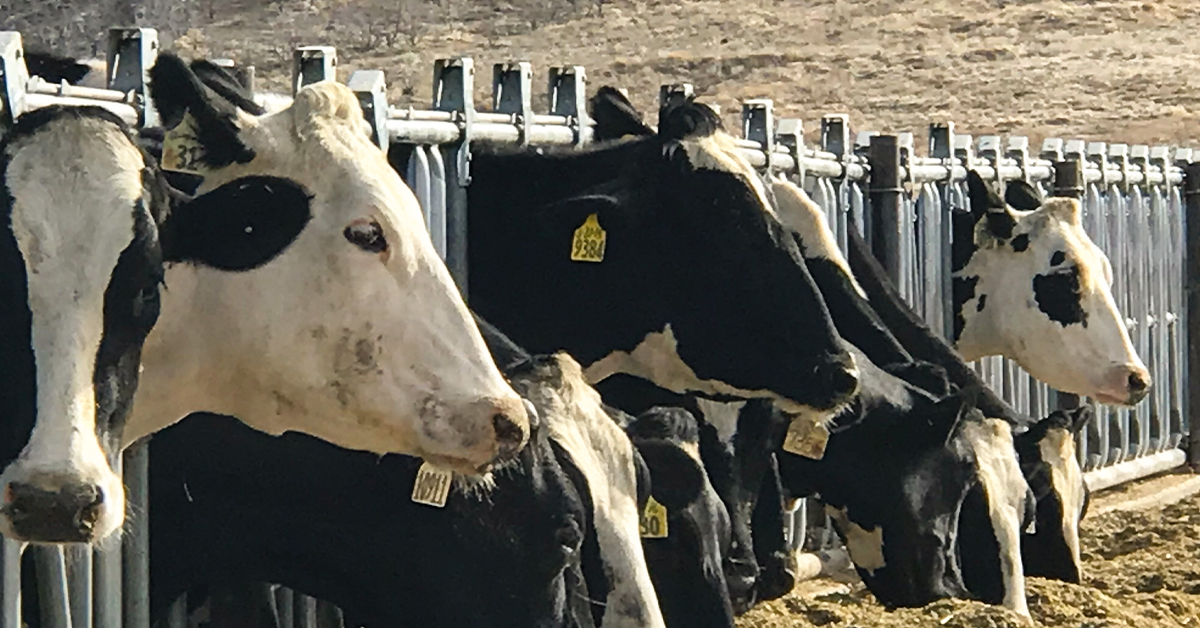
It is the end of April as I write this column, with the country several weeks into the first large-scale pandemic since the Spanish Flu of 1918. Since that time, there has been a monumental shift in advancing technology, an increased understanding of pathogens and how the immune system interacts with those pathogens. This has led to vaccines that have advanced our ability to fend off these outbreaks.
And yet, it seems the greatest emphasis for protecting public health are basic techniques that we continue to routinely follow as livestock producers. In my 30-year career as a veterinarian, I have worked with producers trying to prevent and, when necessary, minimize and treat disease outbreaks. The foundations for any disease prevention program are two-fold: (1) above-average cleanliness and sanitation, and (2) proper vaccination protocols and routines.

The Importance of Cleanliness
Keeping pathogen loads at a minimum by providing clean corrals or pens is one of the most effective things we can do to minimize transmittable diseases. When we do have sick animals, we should treat them separately after tending to the rest of our stock and make sure to disinfect tools, clothes and hands afterwards.
The Role of Vaccines
Vaccination is the second key element in prevention, though as we have seen with COVID-19, there are always pathogens that either do not currently have an approved vaccine or that vaccines are not effective in controlling. When faced with pathogens that have no effective vaccine alternative, we must be vigilant to identify possible affected animals, isolate them so as not to be a threat to herd mates, treat if possible or cull if necessary. When you come up against these types of pathogens, you are constantly balancing a variety of factors, and there is no one solution for every operation.
Proper Protocols and Routines
What we do know is that in all of these situations, a good offense is the best defense. This starts with limiting the introduction of pathogens through limiting introduction of new animals.
Limiting Exposure
In some situations, such as beef bulls in breeding herds, it is not possible to completely eliminate the introduction of new animals. Instead, we work toward having an area where these animals can be quarantined until we can be relatively certain that they do not harbor pathogens which could be detrimental to the operation. During this time the animal is monitored for outward signs of disease and may include testing for certain pathogens of specific interest.
Prepare for Infections
While this is the most obvious channel for disease introduction, it is not the only one. We also have to be vigilant for other vectors of disease which would include people, delivery vehicles, dogs, cats, birds, and other wildlife. While it is very easy to develop protocols to limit possible transmission from visitors, farm personnel, and delivery vehicles, it is next to impossible to stop birds and other wildlife from coming into contact with livestock while looking for a free meal.

Monitoring Disease Transmission
Another part of livestock producers' disease strategy is monitoring pathogen prevalence. Unfortunately, all too often this is the weak link in many programs.
Best Practices
The best surveillance programs would include ongoing active testing such as immunologic titers for highest-risk pathogens. While this provides a wealth of information from a disease-prevention point of view, it is time-consuming and expensive to accomplish.
We often miss opportunities by not having animals showing clinical disease examined as well as tested for the most likely pathogens before treatment begins. Immediately reaching for the bottle of antibiotic will minimize disease progression in the animal you are looking at but may delay recognition and action on an impending outbreak.
Postmortem exams or necropsies of all animals that die on an operation can provide a wealth of information about current disease prevalence. All these pieces of data recorded in an organized manner assist with decision-making in necessary changes in standard operating procedures to improve overall animal health and productivity.
COVID-19 in Livestock
You might wonder if there is any added risk to people working in the livestock industry. Coronaviruses, strains different from COVID-19 and not known to be transmitted to people, are common to poultry and livestock worldwide. They generally cause severe diarrhea or mild respiratory disease in calves. They are also seen in adult cattle, often seasonally where it is commonly referred to as winter dysentery.
Animal's Affected During the Pandemic
There are just three reports of non-human COVID-19 in the current pandemic. These three cases are all in felines in New York, two different cat households and 7 tigers at the Bronx Zoo. These animals are believed to have contracted the virus by contact with humans later diagnosed with COVID-19. Overall the risk of transmission between humans and animals is currently felt to be very low.
Stay Safe
While COVID-19 has caused significant disruption of our daily lives and the economy, the basics of preventing transmission are not very different from what we in the livestock community do every day to keep our animals and the food supply safe.
If we adhere to these basic infection and control principles in our daily routines, we can keep ourselves and the animals that we depend on healthy and safe in an ever-changing world.
For more information, visit your local IFA Country Store or contact an IFA feed & nutrition advisor.
Discover IFA Feed & Nutrition Services
Written by Doug Skyer, D.V.M. Nutritionist & Animal Health Consultant, IFA South Region Feed, and originally published in the IFA Cooperator magazine (vol. 86, no. 2) Summer 2020.

